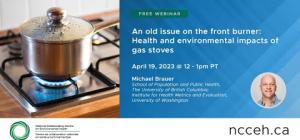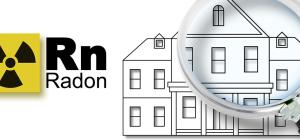
Air cleaning technologies for indoor spaces during the COVID-19 pandemic

The COVID-19 pandemic has presented public health with many challenges including how best to reduce transmission of SARS-CoV-2 in indoor spaces, where most transmission events occur. Layering of multiple mitigation measures is recommended and one of the most widely recommended engineering controls is increased ventilation (see NCCEH blog Role of ventilation in influencing COVID-19 transmission risk). Many spaces may be hard to ventilate with no existing mechanical ventilation or opening windows, leading some building users and managers to consider technologies such as standalone or portable air cleaners and purifiers to support risk mitigation indoors. But how do air cleaning technologies work? Can they reduce transmission risks? What are the potential risks and additional considerations for anyone using them?
What do air cleaning devices do?
Air cleaning devices have been used for many years to improve indoor air quality by removing pollutants and allergens. Terminology can vary (e.g., air cleaner, air filter, air cleaning device, air purifier etc.) but devices referred to in this blog include portable devices or standalone wall or ceiling mounted systems that remove airborne pollutants from the air. Air cleaning devices typically operate in one of two ways as shown in the examples in Table 1. They physically remove particles from the air (e.g., air cleaners such as filters and precipitators), or they destroy or inactivate organic compounds and pathogens (e.g., air purifiers such as ultraviolet (UV) systems, plasma generators, ozone generators). Some systems incorporate more than one technology. Each device can present different benefits and potential risks.
Table 1 Examples of indoor air cleaning devices – how they work, and potential risks 1-6
|
Type |
How it works |
Potential Risks |
| Air Cleaners - Devices designed to remove particles from air | ||
| Filter media |
|
|
| Electrostatic precipitator (ESP) |
|
|
| Ion Generators |
|
|
| Air purifiers - Devices intended to destroy particles and kill or inactivate pathogens | ||
| Ultraviolet Germicidal Irradiation (UVGI) |
|
|
| Plasma air cleaners |
|
|
| Ozone generators |
|
|
Can air cleaning devices reduce the risks of SARS-CoV-2 transmission indoors?
Transmission risks are greater in enclosed and under-ventilated indoor spaces, which should be avoided as communal places of work, leisure, or learning. In some indoor spaces, air cleaning devices can assist with removal of airborne pollutants and provide some supplemental clean air on a small scale. Public health agencies and regulators emphasize the importance of consulting an expert to determine whether a given space is adequately ventilated, and to carefully consider all the risk mitigation options that are available. Air cleaning devices cannot prevent short-range transmission of SARS-CoV-2 and should not replace other important mitigation measures. Some products may be able to remove small particles and inactivate pathogens, including viruses, but to date there have been no studies that have demonstrated the ability of these devices to reduce transmission of SARS-CoV-2 in indoor spaces. Air cleaning devices can improve indoor air quality generally but cannot prevent transmission associated with close contact interactions, the primary route of transmission. Building owners or operators seeking to use air cleaning devices to supplement existing ventilation should carefully consider the potential benefits weighed against potential risks (as listed in Table 1).
An important distinction is also needed for devices used in a single zone or room (portable and standalone systems) compared with devices incorporated into existing HVAC systems. To date there has been no evidence that SARS-CoV-2 can be transmitted between spaces through HVAC systems. Most transmission occurs when persons are in close contact within the same space. In-duct treatment systems may therefore have minimal impact on reducing transmission risks of SARS-CoV-2 in buildings where they are only treating incoming air, not ambient air. Additional FAQs from ASHRAE on ventilation and air cleaners can be found here.
Additional considerations for using air cleaning devices
Aside from consideration of risks to room occupants (Table 1) users should ensure air cleaning devices are appropriately sized and appropriately located to ensure they work effectively. Using a small device in a large space will have minimal effect on improving air quality. Similarly, placing a device in a corner, under or behind furniture can limit the effectiveness.
Sizing an air cleaning device for a room involves identifying the ventilation needs of the space, measured as air changes per hour (ACH) or litres per second per person, and the performance of the device, measured as clean air delivery rate (CADR). This often requires consultation with a ventilation expert. Matching a device’s CADR capacity to ACH needs requires consulting the manufacturer’s stated performance (as per standards such as AHAM AC-1-2020 - Portable Electric Room Cleaners). As an example, for 80% overall particle removal (not specific to pathogens, dust etc.), the USEPA suggests that a minimum CADR of 65 cfm (or about 30.7 L/s or 110 m3/h) is required to treat a 100 ft2 (9.3 m2) room. The minimum CADR required increases proportionally with room size. Multiple air cleaning units may be required to achieve the desired treatment level, which can be costly.
Users of air cleaning devices should also consider the requirements for regular maintenance to ensure devices are operating as intended. This may require consideration of training needs as well as costs related to consumables such as replacement filters or lamps.
Key messages
Air cleaning devices cannot eliminate transmission risks in unventilated spaces and should not be used to increase occupancy limits advised by public health. Some devices may help to reduce airborne pollutants in addition to existing natural or mechanical ventilation, but they do not protect against short-range transmission of droplets and aerosols and their use must not cause a relaxation of other important risk mitigation measures, such as physical distancing, mask wearing, hand-hygiene and other controls. Before considering using an air cleaning device, building owners and operators should seek expert advice and ask some key questions to aid decision making:
- Are there other control measures that are equally or more effective?
- Have the basic and inexpensive measures to improve ventilation already been enacted?
- Are there other source control or engineering controls that could be considered?
- See NCCEH blog on Physical Barriers
- Are all relevant administrative and PPE controls being used? (e.g., does the minimum level of protection provided by the device exceed that offered by other measures)?
- See NCCEH document on Masks
- Would moving certain activities to another space with better ventilation be just as effective and economical?
- Is there potential for the system to introduce new risks?
- Who may be affected by identified risks and when?
- Who will be using it/maintaining it? Is there training required?
- Will the placement of the device create any tripping or electrical hazards?
- Are there ways to mitigate potential adverse health impacts for those exposed?
- Is the device suitable for the size and nature of the space, activities, and occupants?
- Is the technology well established and is the product certified to relevant standards? (e.g. on the AHAM directory or similar)?
Further information on the use of air cleaning devices during the COVID-19 pandemic can be found from the following resources:
- National Air Filtration Association (NAFA). COVID-19 and Air Filtration FAQs
- US Environmental Protection Agency (USEPA): Air Cleaners, HVAC Filters, and Coronavirus (COVID-19)
- American Society of Heating, Refrigeration and AC Engineers (ASHRAE): Filtration and Disinfection FAQs
- Federation of European HVAC Associations (REHVA): REHVA COVID 19 Guidance
The information provided in this blog does not constitute recommendations for or against the use of air cleaning devices in public or private settings, nor does it supersede jurisdictional regulations or guidelines. Expert advice should be sought before procuring equipment or adapting systems.
Additional References
- Barn P. Residential air cleaner use to improve indoor air quality and health: A review of the evidence. Vancouver, BC: National Collaborating Centre for Environmental Health; 2010. Available from: https://ncceh.ca/sites/default/files/Air_Cleaners_Oct_2010.pdf.
- United States Environmental Protection Agency. Residential air cleaners. A technical summary. Washington DC: US EPA Indoor Environments Division; 2018 Jul. Available from: https://www.epa.gov/sites/production/files/2018-07/documents/residential_air_cleaners_-_a_technical_summary_3rd_edition.pdf.
- American Industrial Hygiene Association. Reducing the risk of COVID-19 using engineering controls. Falls Church, VA: AIHA; 2020 Aug 28. Available from: https://aiha-assets.sfo2.digitaloceanspaces.com/AIHA/resources/Guidance-Documents/Reducing-the-Risk-of-COVID-19-using-Engineering-Controls-Guidance-Document.pdf.
- Federation of European Heating Ventilation and Air Conditioning Associations. REHVA COVID-19 guidance document: How to operate HVAC and other building service systems to prevent the spread of coronavirus (SARS-CoV-2) disease (COVID-19) in workplaces. Brussels: REHVA; 2020 Aug 3. Available from: https://www.rehva.eu/fileadmin/user_upload/REHVA_COVID-19_guidance_document_V3_03082020.pdf.
- European Centre for Disease Control and Prevention. Heating, ventilation and air-conditioning systems in the context of COVID-19: first update. Stockholm: ECDC; 2020 Nov 10. Available from: https://www.ecdc.europa.eu/sites/default/files/documents/Heating-ventilation-air-conditioning-systems-in-the-context-of-COVID-19-first-update.pdf.
- Medical Advisory Secretariat, Ministry of Health and Long-Term Care. Air cleaning technologies, an evidence-based anallysis. Toronto, ON: Government of Ontario; 2005 Nov. Available from: https://www.ncbi.nlm.nih.gov/pmc/articles/PMC3382390/pdf/ohtas-05-52.pdf.








